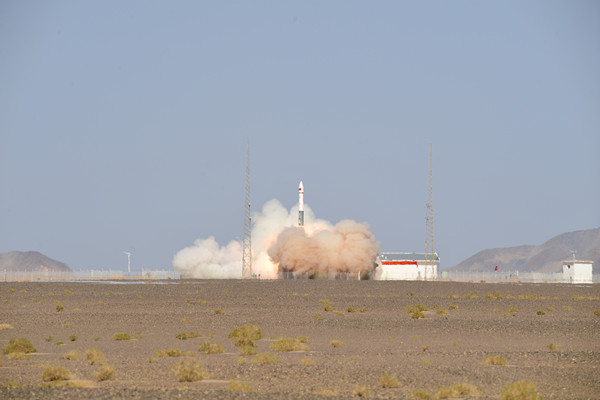China launches high-resolution Earth-observation satellite

A Kuaizhou-1A carrier rocket lifts Jilin-1 Gaofen 02D satellite into planned orbit from the Jiuquan Satellite Launch Center on Sept, 27, 2021. [Photo by Wang Jiangbo/for chinadaily.com.cn]
China launched a Kuaizhou 1A carrier rocket to place a high-resolution Earth-observation satellite in space on Monday afternoon, according to China Aerospace Science and Industry Corporation.
The State-owned space contractor said in a statement the solid-propellant rocket blasted off at 2:19 pm at the Jiuquan Satellite Launch Center in northwestern China and soon deployed the satellite – Jilin-1 Gaofen-02D – into its preset orbit. The mission marked the 11th flight of the Kuaizhou 1A.
Kuaizhou is the largest solid-propellant rocket family in China, as opposed to the Long March series that mainly relies on liquid fuel.
The 20-meter Kuaizhou 1A has a liftoff weight of about 30 metric tons. It is capable of sending 200 kilograms of payload into a sun-synchronous orbit, or 300 kg of payload into a low-Earth orbit, according to CASIC.
Since its maiden flight in January 2017, the rocket has lifted 20 satellites into space.
CASIC began to develop the Kuaizhou series in 2009 as a low-cost, quick-response product for the commercial space market. The company has built a manufacturing complex for its Kuaizhou-series carrier rockets at the 68.8-square-kilometer Wuhan National Space Industry Base in Central China's Hubei province. The rocket factory has begun first-phase operation with an initial production capacity of 20 Kuaizhou-series rockets a year.
The Jilin-1 Gaofen-02D, developed by Changguang Satellite Technology in Northeast China's Jilin province, is tasked with generating remote-sensing data for a host of public sectors, such as land resources monitoring, mineral resources development, urban management and environmental inspection.
